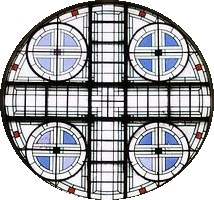ABOUT ST COLUMBA’S CHURCH SOUTHWICK
One of the most impressive Victorian buildings in Sunderland, an elegant brick built basilica in Byzantine-Romanesque style that rises above the ranked terraces of Southwick.
Charles Hodgson Fowler (1840-1910), who was architect to the Dean and Chapter of Durham from 1885 until his death designed the church. Fowler had trained in the office of Sir George Gilbert Scott (1811-1878), the most prolific architect of the Victorian period, and this gave him a thorough knowledge of the gothic style.
St Columba’s Church is perhaps the most developed in a pattern of basilican churches, large or small, that Fowler executed during the last decades of his career. The particular emphasis on processional routes and the visibility of the liturgy at St Columba’s Church directly reflects the Anglo-Catholicism of its congregation and their architect.
Taking the form of a Roman basilica, the vast bulk is divided into a broad nave and side aisles, supporting an extremely high clerestory. The powerful lines of the nave continue into the chancel, which ends with a semi circular apse with conical roof. Down the nave walls, the bays are divided by shallow pillars. The frontage has porches running the full width of the building, but the bold form of an apsidal baptistry rises from the porches and terminates with another conical roof. The interior is equally impressive in its uncompromising severity. Arcades run down the full length of the nave, composed of plain Romanesque arches on round piers. A rich communion rail is executed in cream, green and red marble.
The chancel has a marble mosaic floor incorporating the local stone known as ‘Frosterley Marble’, in fact a Carboniferous limestone containing fossilised coral. There is also a square font with Romanesque carving. The forms of the church are bold and monumental, but a note of richness was introduced by the artist James Eadie Reid (1856-1928), who orchestrated a spectacular interior design scheme. The apse was painted with biblical scenes and images of early saints, including Columba, Cuthbert and Aidan. Reid’s biblical images were inspired by visits to the Holy Land. Eadie-Reid’s painted murals of biblical scenes represent perhaps the most significant scheme of murals by the artist anywhere in Britain.
The organ on the north side of the chancel area of this basilican building is an unusual and interesting historical artefact, a ‘compilation’ by an anonymous builder.
The windows are of single standing figures of saints, with a coherent scheme, although executed progressively by different artists. Embedded in the walls of the church is an original stone from Iona from the house where St Columba himself had lived in the 6th Century. The plaque that commemorates the visit of the late Princess of Wales, Princess Diana to open the parish halls in 1990 is at the entrance to the hall.
